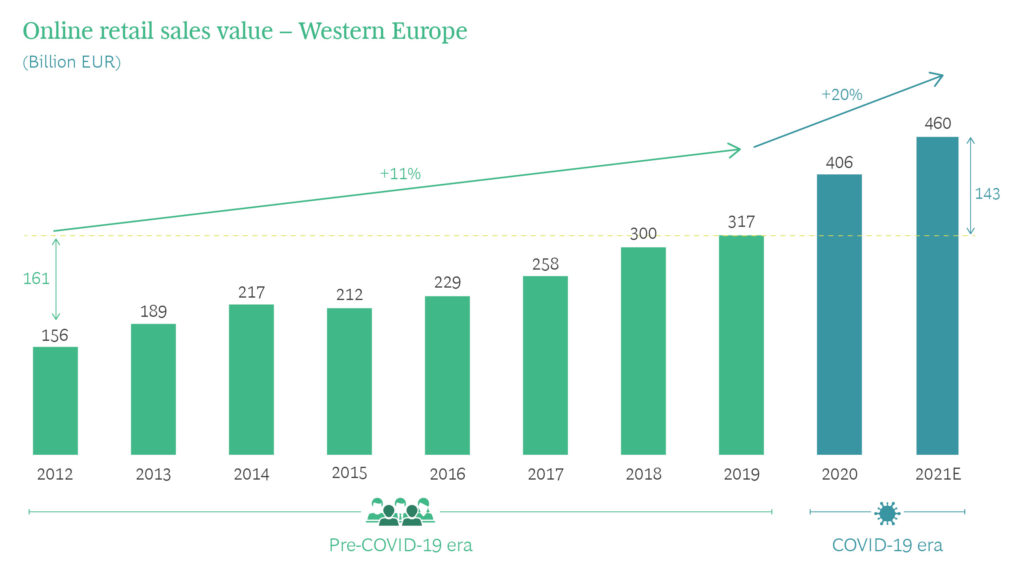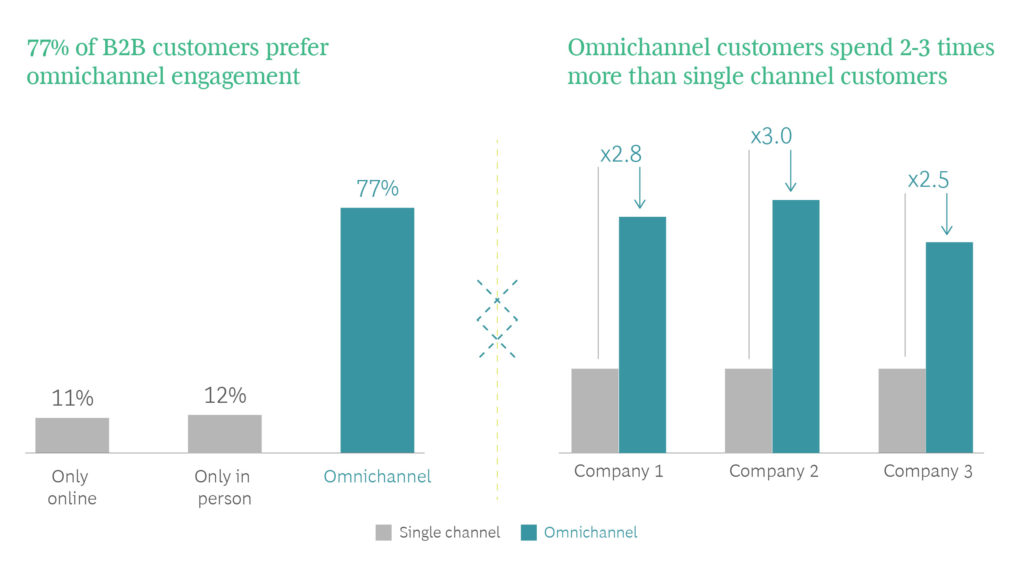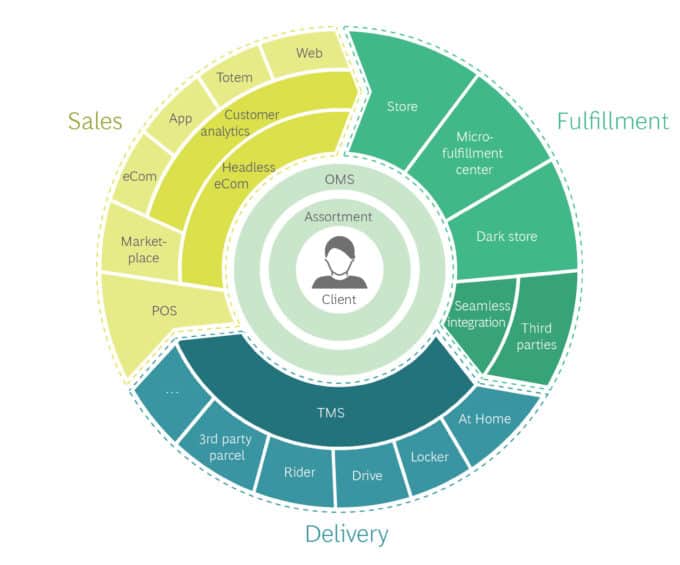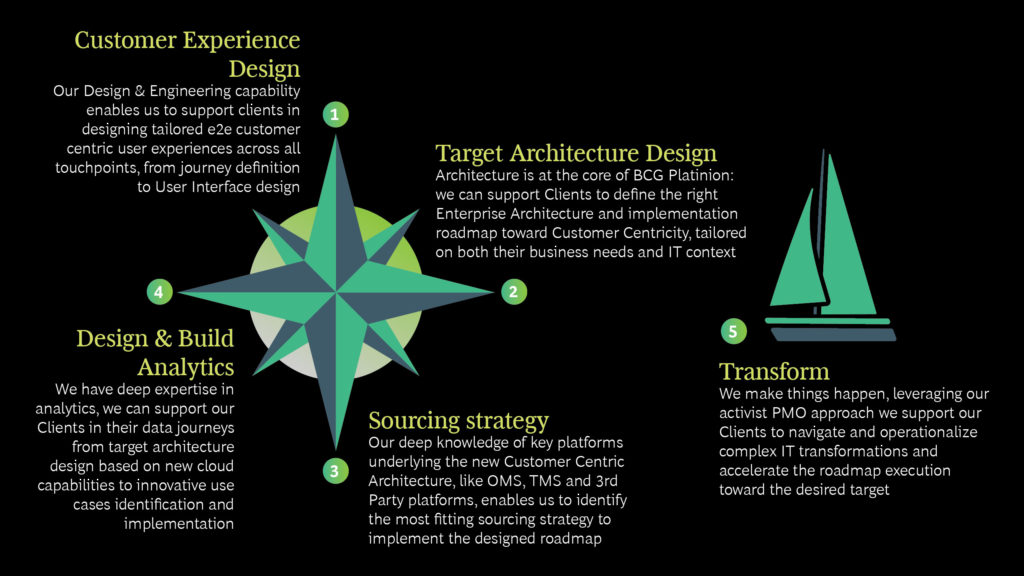Online Shopping Is Here to Stay
E-commerce has and will continue to be a key distribution channel for retailers worldwide, but its spread and relevance are not growing linearly. In many countries, COVID-19 has given such a powerful boost to consumer habits and retailer response that researchers in Western Europe have observed growth in online shopping (retail sales value) during the past two years equivalent to that of the previous eight. The same dynamic can be observed globally in all the other major regions.

During the critical months of the pandemic, the frequency of online shopping increased across all demographics, making it a daily habit for most. Even digital laggards, who before COVID‑19 struggled to join the online consumer experience, finally adopted online shopping out of necessity.
And when the necessity was over, e‑commerce remained! Today it’s considered more convenient by many customers for several reasons: home delivery, price, and availability, among the other things.

The Watchword Now Is Omnichannel Commerce
However, particularly in sectors where margins are already low, such as grocery, the increase in the distribution of online channels may have an overall negative impact on EBITDA.
Further complexity could also arise from the need to achieve long-term sustainability, a top-of-mind issue for all organizations today, requiring them to optimize processes or develop alternative distribution strategies (for example, pushing an out-of-home strategy instead of home delivery can result in a 66% reduction in distance km and 15% package costs).
Unsurprisingly, many companies have had doubts about e‑commerce, but the pandemic has made it clear that having an online presence is imperative, leading to an acceleration of investment across all industries.
A BCG study identified omnichannel commerce as the strategy to overcome these challenges and extract the most in the post-COVID era. Omnichannel is simply more valuable to companies than single or multichannel approaches, and most importantly it’s what customers today expect from them. It is no longer a choice, it’s a must.
BCG Platinion has identified three main reasons why omnichannel matters:

Omnichannel is then a source of profit, as customers spend more, are more loyal, and they overall prefer omnichannel engagement even on B2B markets, making this an opportunity retailers should take into consideration.
Copernican Revolution for Commerce Architecture
The shift toward omnichannel requires deeply reviewing the existing IT architecture. That in turn involves moving from a channel-centric (channels are siloed and managed independently, with limited synergies) to a customer-centric model that places customer needs at the forefront as a new paradigm generating a Copernican Revolution for commerce architecture.

There are four main functional capabilities required to build an omnichannel architecture:
-
Omnichannel UX. Companies must be able to provide a consistent customer experience across all touchpoints, leveraging the information available from all sources and employing it to establish client relationships that go beyond expectations.
-
Digital supply chain. Mastering the optimization of e‑commerce logistics, in particular the processes of fulfillment and delivery, is a must-have to shrink omnichannel-related costs and increase the bottom line.
-
Seamless merchandise extension. Expanding the core product range to sell third-party merchandise allows companies to access extra revenue and growth opportunities—provided that a unified customer experience is maintained and the integration with vendors is continuous.
-
Personalization. Being able to exploit the full potential of data allows for a deeper customer understanding that can, in turn, bring both short- and long-term benefits; for example, increasing customer satisfaction and boosting upselling and cross-selling.
These capabilities can be unlocked through a target architecture based on six key elements:
1. Headless e-commerce. A headless commerce separates the front-end experience from the back-end systems, so that both can be changed independently, granting flexibility, speed, and agility, as well as much better performance.
2. Customer analytics. A full view of the customer enables AI and ML algorithms to engage consumers through dynamic experiences with personalized content, offers, advice, recommendations, and so on.


3. Assortment management. A proper omnichannel approach requires to centrally manage the listing and augmenting of the product catalog, ensuring consistency across touchpoints.
4. OMS. Order management systems are a key element of the digital supply chain and at the core of the new customer-centric approach for e-commerce.
They allow for organizing, automating, and streamlining the order fulfillment processes, improving efficiency, and enabling the harmonization of digital and physical touchpoints into in a single, concentric view that provides customers with a seamless omnichannel experience across touchpoints and points of delivery.
5. Seamless third-party integration. Third-party integration platforms enable a quick scaling of assortment with marginal operational cost.
The goal of this operation is twofold: connecting sellers by making their content directly exploitable and automating the main functions of the marketplace, ultimately increasing channel effectiveness.
6. TMS. Transportation management systems enable efficient planning, execution, and optimization of product delivery.


These six technological enablers move an integrated sales cycle in which the OMS allows for setting up an assortment of products tailored to the needs of customers; thanks to analytics
A Route for Each One
The question is now, where do we start? What’s the priority to work on to set sail toward a new customer-centric e‑commerce?
Based on past experience with our clients, we suggests companies identify their customer-centric e-commerce transformation priorities based on two expected business outcomes:
BCG Platinion has identified four starting points that describe the route companies must take according to their situation regarding the two variables just described.
Do you expect your customers will shift to the e‑commerce channel and for it to have a negative overall effect on margins?
OPTIMIZE. Optimize operations across the whole digital supply chain focusing on OMS and TMS implementation to reduce costs and ensure profitability.
Do you expect your customers will shift to the e‑commerce channel but for it to have a positive overall effect on your margins?
CUSTOMIZE. Customize the experience leveraging by existing customer data and implementing customer analytics to boost satisfaction, cross-selling, and upselling.
Do you expect to acquire new customers when opening an online channel but for e‑commerce to have a negative overall effect on your margins?
EXTEND. Extend the assortment offer through third-party integration to sell more profitable products and increase EBITDA.

Do you expect to acquire new customers when opening an online channel and e‑commerce to have a positive overall effect on your margins?
ATTRACT. Attract new customers by designing a engaging omnichannel journey and frictionless UX across touchpoints, also leveraging the benefits of a headless commerce implementation
BCG Platinion, Your Travel Partner Onboard
BCG Platinion can support organizations in tackling the e-commerce challenge by designing a tailor-made IT architecture while they’re shaping their own transformation journey.
BCG Platinion lends its support throughout the journey toward customer centricity, helping companies to define their starting point, identifying a technological destination capable of optimizing business objectives, and assisting company teams until the development of the necessary capabilities, construction of the IT infrastructure, and the achievement of the desired impact.

The map to sail in the e‑commerce red ocean can be designed around the new needs of customers.
By following these cardinal points and equipping the hull, it will be possible to reach new shores.
The wind is blowing, it’s time to set sail.
About the Authors
Carmine Calò is an Associate Director at BCG Platinion, bringing in +15 years of experience with enterprise architecture, omnichannel architecture, digital transformation and postmerger & acquisition projects. He has led numerous business and technological transformations, such as designing and supporting implementation of e‑commerce sales platform, omnichannel order management & digital transformation based on SAP or other packed solutions, with particular focus on retail, travel, transportation, automotive, banking, and energy sectors.
Andrea Foti
Former Senior IT ArchitectMilan, Italy
Andrea Foti is a Senior IT Architect at BCG Platinion. With more than 6 years of experience in technology and strategy transformations focused on data analytics, martech, loyalty, and CRM, he has supported clients in boosting and redesigning their technological landscape as part of digital transformation projects across several sectors including consumer goods, insurance, energy, and industrial goods.
Marco Freddi
ManagerMilan, Italy
Marco Freddi is a Manager at BCG Platinion. With more than 8 years of experience in digital transformation programs and architecture design in CX and Commerce, he has driven many client to boost their business leveraging the most innovative technologies. Besides that, Marco has supported clients in processes redesign, target operating model design and complex tech transformation governance, ranging from Consumer to Insurance, Banking and Energy sectors.
Irene Buonanno
Senior IT ConsultantMilan, Italy
Irene Buonanno is a Consultant at BCG Platinion, with more than 3 years of experience in digital transformation projects. Irene has also participated in analytics and business intelligence projects for clients in the retail industry, supporting in redesigning data models, implementing data visualization dashboards, and extracting value from customer analytics.
Centering your solutions around the human will be imperative in the future. Find out more about human-centered IT approaches here:




